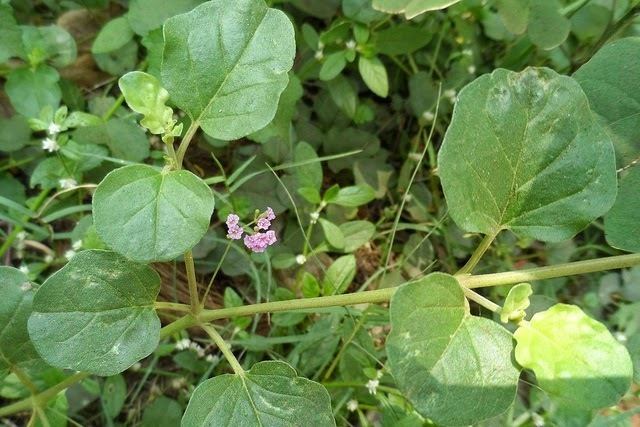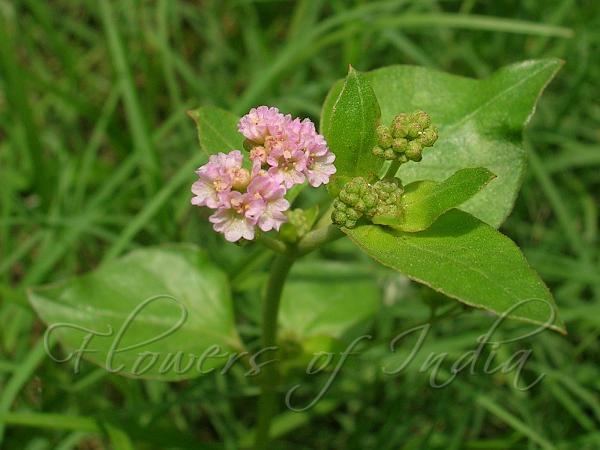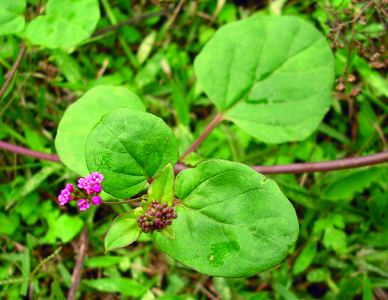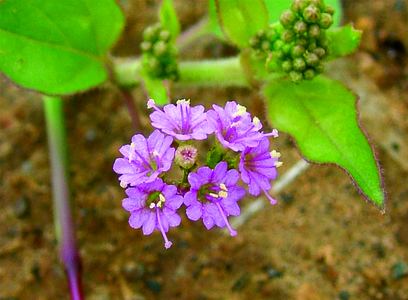Rank Species | Genus Boerhavia Higher classification Boerhavia | |
 | ||
Similar Boerhavia, Heart‑leaved moonseed, Shatavari, Myrobalan, Indian bdellium‑tree | ||
Herbal medicine boerhavia diffusa natural remedy for jaundice
Boerhavia diffusa is a species of flowering plant in the four o'clock family which is commonly known as punarnava (meaning that which rejuvenates or renews the body in Ayurveda), red spiderling, spreading hogweed, or tarvine. It is taken in herbal medicine for pain relief and other uses. The leaves of B. diffusa are often used as a green vegetable in many parts of India.
Contents
- Herbal medicine boerhavia diffusa natural remedy for jaundice
- Description
- Distribution
- Economic importance
- Chemistry
- References

Description

Boerhavia diffusa is widely dispersed, occurring throughout India, the Pacific, and southern United States. This wide range is explained by its small fruit, which are very sticky and grow a few inches off the ground, ideally placed to latch on to small migratory birds as they walk by.
Distribution

A true and accurate accounting of the native range of Boerhavia diffusa has not been determined. However, it is very widespread, and has become naturalized in many places. It is believed to be a native plant to the following places:

Botswana; Egypt; Ghana; Kenya; Liberia; Malawi; Mozambique; Namibia; Nigeria; Rwanda; Senegal; Sierra Leone; Somalia; South Africa (Eastern Cape, Gauteng, KwaZulu-Natal, Limpopo, Mpumalanga, Northern Cape provinces); Swaziland; Tanzania; Togo; Uganda; Zambia; and Zimbabwe.

Burma; Cambodia; China (Fujian, Guangdong, Guangxi, Guizhou, Hainan, Sichuan, and Yunnan provinces) India;Bangladesh; Indonesia; Japan (Ryukyu Islands); Laos; Malaysia; Nepal; the Philippines; southern Taiwan; Thailand; and Vietnam. Also, on the Arabian Peninsula: Oman; Saudi Arabia; and the United Arab Emirates; and Yemen (Socotra).
Mexico; and the U.S. (in the states of Florida, Georgia, and South Carolina).

Anguilla; the Bahamas; the Cayman Islands; Cuba; Dominica; Grenada; Hispaniola (Dominican Republic and Haiti); Jamaica; Montserrat; the Netherlands Antilles (Saba); Puerto Rico; Saint Lucia; Saint Vincent and the Grenadines; and both the British and the U.S. Virgin Islands.
Argentina; Belize; Bolivia; Chile; Costa Rica; Ecuador; French Guiana; Guatemala; Guyana; Nicaragua; Panama; Paraguay; Peru; Suriname; Uruguay; and Venezuela.
Fiji; and New Caledonia.
Economic importance
B. diffusa is widely used as a green leafy vegetable in many Asian and African countries. B. diffusa can be used as a fodder for livestock, but has the potential for contaminating seed stocks, and may harbor pathogens for certain crops, such as eggplants.
Chemistry
Boeravinones G and H are two rotenoids isolated from B. diffusa. A quinolone alkaloid, lunamarine, isolated from B. diffusa has shown some in vitro anticancer, antiestrogenic, immunomodulatory, and anti-amoebic activity (particularly against Entamoeba histolytica). The plant contains a protein called BDP-30, presumably a ribosome-inactivating protein.
